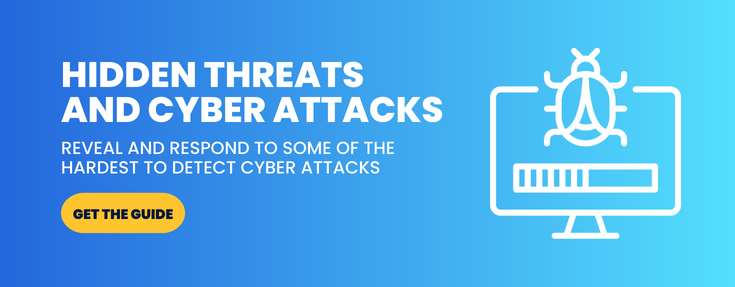Automating Your Threat Response

 By
Jason Miller
·
3 minute read
By
Jason Miller
·
3 minute read
Threat detection is an integral element of your security strategy. Without effective detection, threats can become breaches before action can be taken. This can cause irreversible damage to your business and your brand.
So how you identify threats as quickly as possible? With an insurmountable amount of data being processed, manual threat detection is becoming increasingly difficult. For businesses, relying on manual threat detection highlights two main problems; efficacy and cost.
Even with a highly advanced team of security specialists who can identify and assess threats, it’s highly unlikely they would be able to keep up with the amount of data being processed. Automated data processing, parsing, and storage works far more quickly than humans can. So even the largest security teams can’t be expected to monitor and detect threats as quickly as data can be processed.
Furthermore, employing a team that is capable of processing this amount of data and identifying threats would be extremely costly. For even the most profitable businesses, this just isn’t the most efficient solution.
Automated threat detection is the answer.
What is Automated Threat Detection?
Instead of relying on people to detect threats, automated threat detection relies on integrated systems to highlight potential threats. Using security information and event management (SIEM) and security orchestration, automation and response (SOAR) platforms, organizations can streamline an approach to threat detection.
Once your data has been collected, parsed, and stored by your SIEM system, it can be analyzed. Automating this process means that analysis can take place at the same rate data is created, collected and parsed. This leaves only an imperceptible amount of time between a threat arising and it being identified.
A security automation platform is capable of analyzing data far more quickly than security personnel are able to so it can pick up on anomalous behavior more quickly too. By automating the analysis of your data, you are only one step away from automating threat detection too. Your security specialists simply need to tell your SOAR system what type of activity to look for and flag up as a potential threat. With these rules in place, the system can be left to conduct analysis and threat detection without the need for manual intervention.

Related: Understanding Operational SOC Security
Why is Automated Threat Detection so effective?
Manual threat detection may be useful when there is only a small amount of data to contend with. Even then, however, a slight oversight or error could allow a threat to pass through the system undetected. When this happens, a business can suffer considerable fiscal, practical, and reputation damage.
With automated threat detection, the risk of this happening is drastically reduced or eliminated altogether. With robust systems analyzing data and identifying threats, there is no opportunity for human error to result in a missed threat or vulnerability.
Furthermore, automated threat detection allows threats to be identified as they happen. As SOAR platforms can analyze and identify threats at the same rate that data is processed, there is no time-lapse or lag between the threat becoming apparent and it being identified. This minimizes the harm that a threat can do and ensures it can be dealt with more efficiently.
Automating your threat detection means that you are less reliant on a manual workforce. While security personnel are essential for the management of complex security breaches, identifying potential threats is a routine and often mundane task. If companies were to hire specialist security operatives to carry out this task, it would be an unnecessary use of their resources.
Using automated tools to identify threats is, therefore, far more cost-effective for organizations and provides results more accurately and more quickly than security personnel can.
Automated threat detection is an obvious security solution for businesses of all sizes.
Automating Your Threat Response
Automated threat detection is only one part of the puzzle. Once a threat has been detected, action needs to be taken in order to prevent the threat from becoming an actual security breach. Identifying a threat and knowing about it doesn’t matter if you don’t take action to stop it harming your systems, your organization, and your users.
Of course, you could set up automated threat detection and leave your security team to manually respond to identified threats. However, this is unlikely to work in practice. The considerable amount of data which is analyzed always leads to a high number of threats. Many of these are false positives and can be dismissed, while others are common threats that can easily be removed or remedied.
Relying on employees to do this is time-consuming and unnecessarily expensive. In addition, the high rate of threats being detected may give rise to ‘alarm fatigue’, which could result in slow responses to threats or a lack of response altogether.
Once you’ve automated your threat detection, it’s easy to implement automated responses via SOAR too. This means that you can automatically resolve a significant number of threats without manual intervention. For slightly more complex threats, a one-click execution strategy can reduce the amount of manual intervention requires. For more comprehensive threats, staff can be alerted to a critical issue in real-time.
The Wrap Up
While automated threat detection is a crucial part of your security processes, it works most effectively when it is integrated alongside other automated tools. You can be sure your systems are monitored carefully and that potential threats are identified, quarantined and resolved without delay if you use:
- automated information and event management systems
- security orchestration
- automation and response
With enhanced security protocols being implementing in a cost-effective and labor-saving way, automating your security protocols can be beneficial for your staff, your users and your business.
Ready to take your threat response to the next level? Discover how security automation through BitLyft AIR® can streamline your organization's cybersecurity defenses and improve efficiency. Contact us today to schedule a demo.

